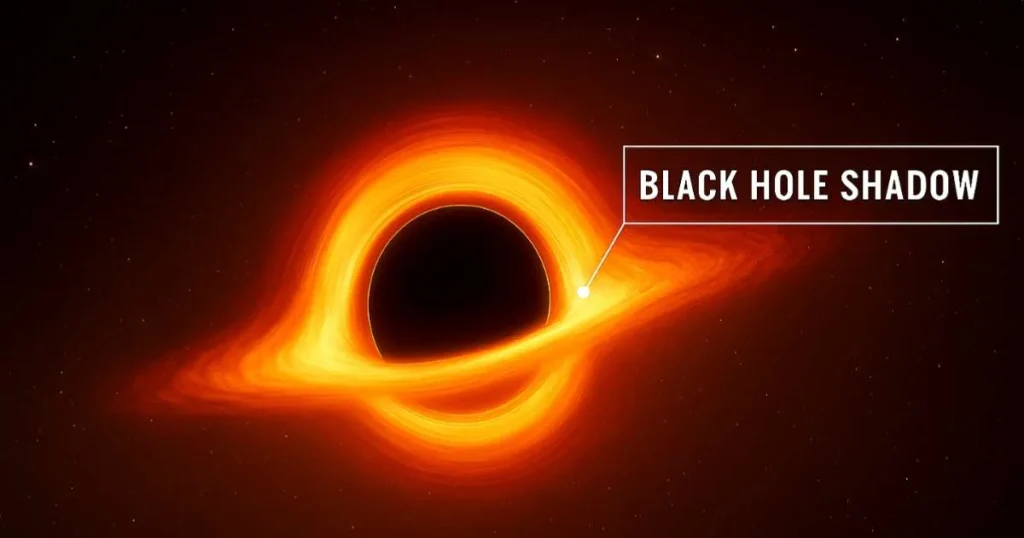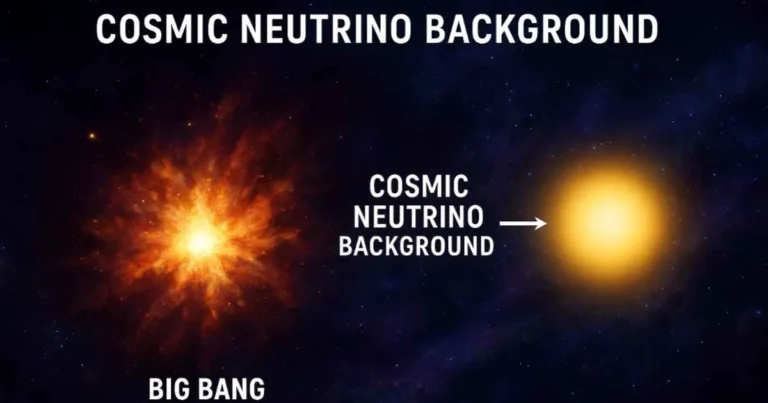What Is a Black Hole Shadow? The Ultimate Glimpse into the Abyss

Tags:
- black hole
- What Is Series
If you could stare into the heart of a galaxy, past the light, past the stars, and into pure darkness, what would you actually see?
When astronomers talk about the black hole shadow, they’re referring to one of the most mind-bending sights in the universe, the silhouette of the unseeable, the faint outline of where light itself gives up.
It’s not just a pretty image or a scientific trophy. That eerie, circular glow tells us about the nature of gravity, spacetime, and even the boundaries of physics itself.
And when, in 2019, the Event Horizon Telescope (EHT) finally captured that first shadow-the silhouette of the supermassive black hole at the galactic center M87, humans literally saw Einstein’s theory of general relativity at work.
What Exactly Is a Black Hole Shadow?
A black hole shadow isn’t the black hole itself, because black holes, by definition, emit no light. What we actually see is the dark region created when light from behind the black hole bends around it due to its insane gravity.
A black hole shadow is the dark outline we see when the light from the surrounding glowing gas is bent and trapped by the black hole’s gravity; not the black hole itself, but its silhouette against the bright backdrop of space.
It’s like watching light swirl around a cosmic drain. The gravity near the event horizon bends and traps light, creating a circular void — the “shadow.”
The edge of that shadow isn’t the physical surface of the black hole but something called the photon ring, a glowing halo of light where photons orbit the black hole multiple times before escaping toward us.
In Short:
The black hole shadow is the visible fingerprint of invisible gravity.
How the Event Horizon Telescope Captured the Unseeable
Let’s be honest — photographing a black hole isn’t exactly a casual telescope hobby.
You can’t just “point and click.” These objects are billions of light-years away and smaller in angular size than a single pixel in your phone’s camera.
So how did we do it?
The Event Horizon Telescope (EHT) linked radio telescopes across the Earth, from the Atacama Desert in Chile to Hawaii, Spain, and the South Pole to create a virtual Earth-sized telescope with a technique called Very Long Baseline Interferometry (VLBI).
By aligning observations globally, the EHT had created a telescope capable of capturing the silhouette of M87*, a 6.5 billion times more massive black hole than our Sun.
When the first image came out in April 2019, that orangey ring of light around the black middle, it wasn’t a picture. It was a test of general relativity in the most extreme possible environment directly.
The Physics Behind the Black Hole Shadow
Let’s get a bit deeper (but not too mathy).
The General Theory of Relativity by Einstein states that gravity is not a force but, rather, the curvature of spacetime. A massive object like a black hole warps this curvature so strongly that even light travels along bent paths.
Near the black hole, photons can orbit in unstable loops. Some get pulled in. Some barely escape.
This dance of light and gravity produces a “shadow” that’s about 2.6 times larger than the event horizon itself — a key prediction that matched the EHT image almost perfectly.
What’s wild is that the shape of this shadow could reveal much more:
- A perfect circle means Einstein was right (again).
- Distortions could mean new physics — maybe even a hint of quantum gravity or exotic objects like white holes or wormholes (which I explored in my post White Holes: The Universe’s Reverse Gear).
Why It’s More Than Just an Image
The black hole shadow isn’t just astrophotography flexing — it’s a Rosetta Stone for gravity itself.
Here’s why it matters:
- It confirms that spacetime behaves as Einstein predicted under extreme conditions.
- It lets us measure black hole spin, mass, and orientation with remarkable precision.
- It gives us a peek into how accretion disks (the hot plasma swirling around black holes) actually feed them.
And beyond the science, it changed our relationship with the cosmos.
For the first time, we weren’t just imagining black holes — we were looking at one.
The Next Frontier: Sagittarius A*
After M87, astronomers decided to home closer to look – at Sagittarius A*, the supermassive black hole chilling at the center of our very own Milky Way galaxy.
The Event Horizon Telescope (EHT), in 2022, finally revealed yet another staggering discovery, an image of Sgr A*, about 4 million times more massive than the Sun.
This one was trickier. Sgr A* changes rapidly, like a cosmic flickering candle. But when the final image dropped, it was a stunning confirmation, both shadows, billions of light-years apart, matched Einstein’s predictions almost exactly.
Two completely different environments. Same physics. Same beautiful symmetry.
How Black Hole Shadows Connect to Cosmic Mysteries
When we study black hole shadows, we’re not just learning about one object, we’re peeking into the architecture of the entire universe.
Light bending, cosmic background signals, even the way energy flows around these monsters all tie into the same story. That’s why when I wrote Gravitational Lensing: The Astonishing Cosmic Magnifier, I realized just how elegantly the universe reuses its own tricks. Both lensing and shadow formation rely on the same principle: spacetime curvature bending light.
Even the faint relic glow of the Cosmic Neutrino Background: The Ghostly Relic of the Big Bang
shares this narrative. These nearly undetectable neutrinos still travel through the curved spacetime shaped by black holes and galaxies alike. Everything, from the Big Bang to the black hole is part of the same cosmic geometry.
And if quasars, those hyper-bright, active galactic nuclei (check my piece on Quasi-Stellar Objects: The True Stellar Illusion), show us how matter behaves when it’s falling into black holes, then shadows show us what happens when light can’t escape at all.
It’s all interconnected. One cosmic feedback loop of light, gravity, and time.
What Future Observations Could Reveal
The first EHT images are just the beginning. Next-generation telescopes, including space-based arrays could soon sharpen these shadows into movies, not just snapshots.
Already, scientists are investigating polarization mapping, showing how magnetic fields swirl near the event horizon. We may even be able to observe black hole jets in real-time, those huge streams of plasma stretching over thousands of light-years.
In short, the shadow is no longer the end of the light; it’s the beginning of discovery.
Conclusion
The black hole shadow is a paradox made visible, darkness defined by light.
It’s a proof that the universe hides its most beautiful secrets behind the limits of perception. And somehow, through collaboration, technology, and a bit of cosmic luck, we managed to pull back the veil.
From Einstein’s equations to a glowing orange ring across billions of light-years, this is what it looks like when theory becomes reality. And it reminds us of one simple truth:
Sometimes, to understand the universe, you have to look directly into the dark.
Comments
Please log in to leave a comment.
Related Posts

Magnetar: The Universe’s Most Extreme Magnetic Monster
Magnetars are ultra-magnetic neutron stars, cosmic beasts that emit bursts of radiation so powerful they can shake entire galaxies. Learn how they form, what makes them unique, and why their mystery continues to fascinate astronomers.

White Holes: The Universe’s Reverse Gear
If we were to rank the theories that have changed human history forever, the General Theory of Relativity would be at the top. The results it reveals are beyond human understanding. They show that the cosmos is filled with perplexing phenomena, some of which are purely hypothetical yet mathematically elegant. One such phenomenon is the […]

Cosmic Neutrino Background: The Ghostly Relic of the Big Bang
The Cosmic Neutrino Background is the ghostly radiation from the Big Bang’s first second. Undetected yet essential, it holds secrets about neutrino mass, dark matter, and the universe’s origin story. Here’s why scientists are chasing this invisible relic.